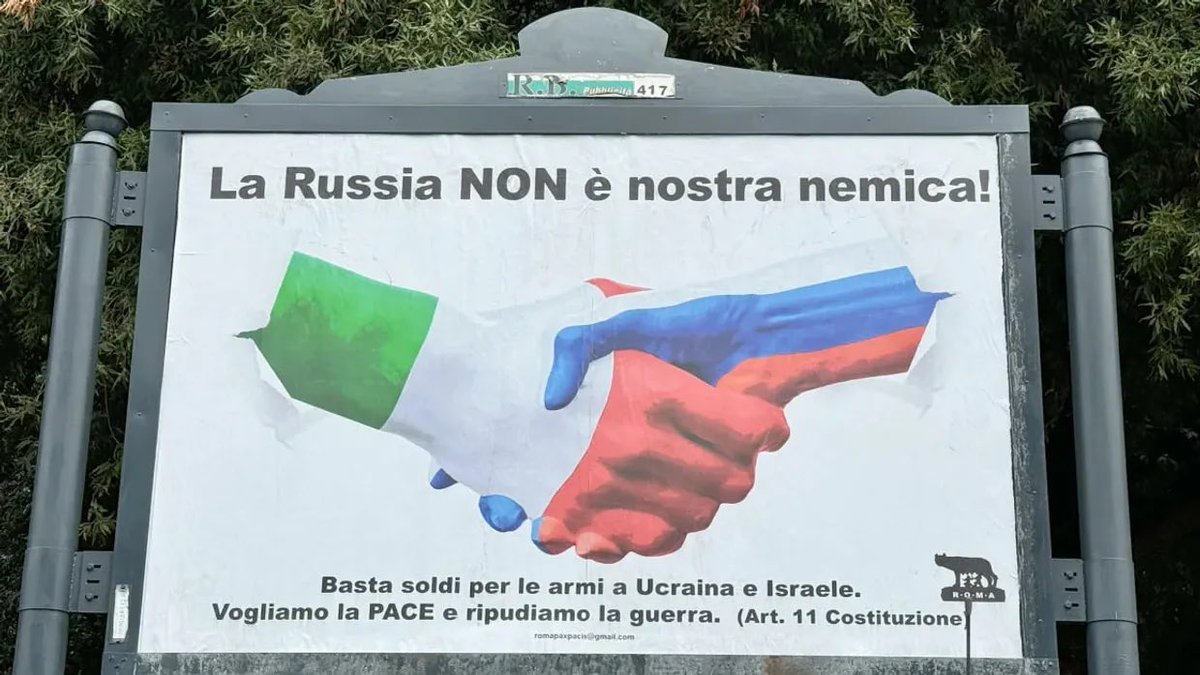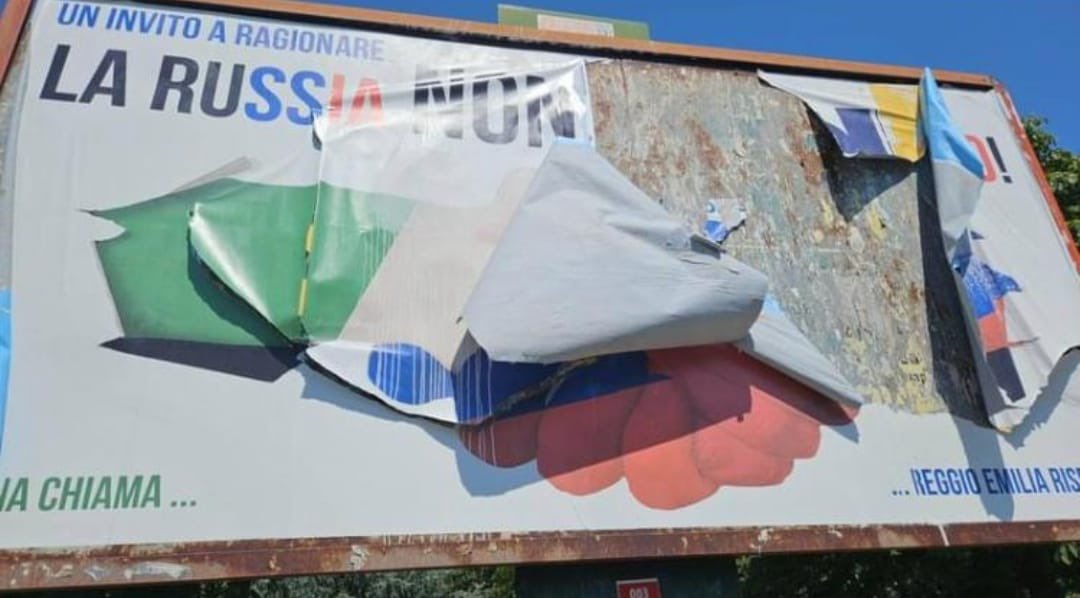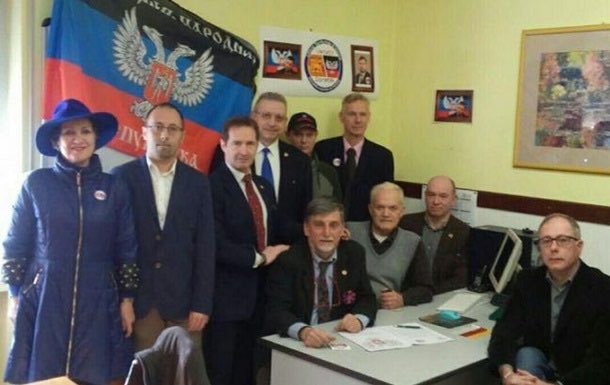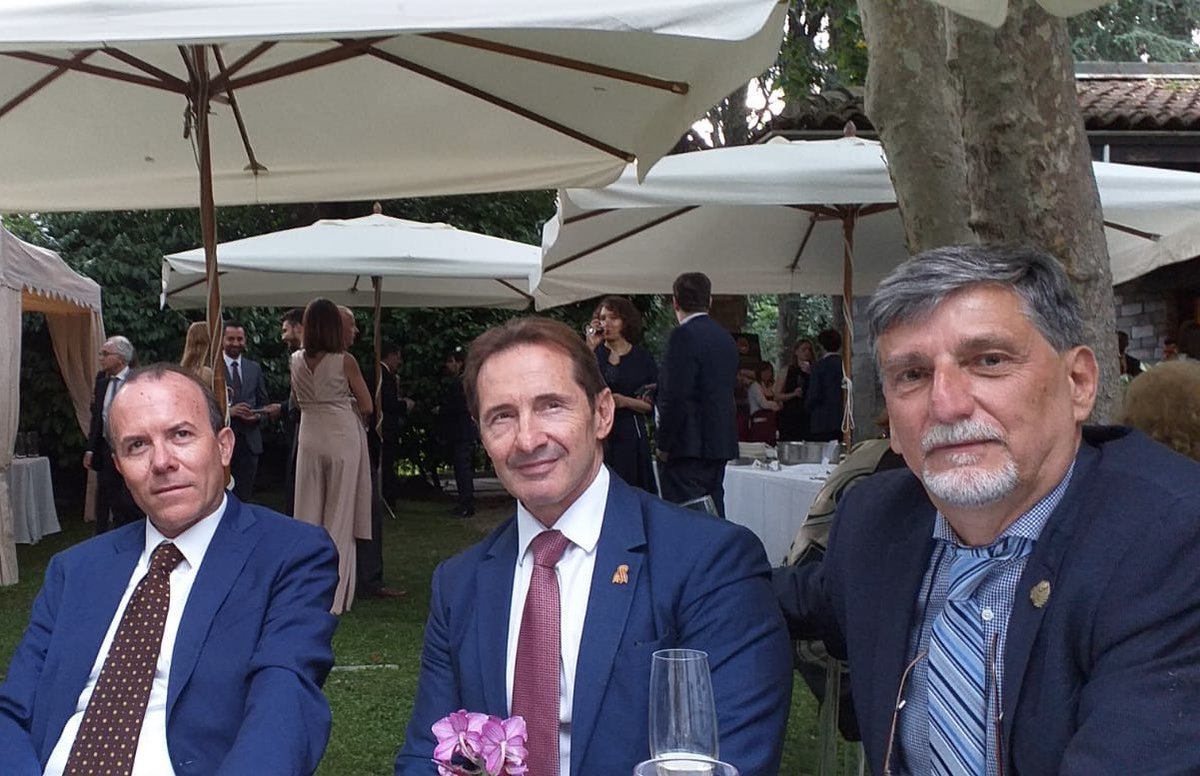Earlier this month, Italian cities saw a pro-Russian billboard campaign: “Russia is not our enemy” was written on billboards that also depicted an Italy-Russia handshake. The billboards also called on stopping to provide money for “weapons for Ukraine and Israel”. 1/15 

Ukraine’s Embassy in Italy responded quickly to the campaign saying that it was “deeply concerned by the arrogance of Russian propaganda” in Rome and asking the Rome authorities “to reconsider granting permits for such posters that have a clear purpose of rehabilitating the image of the aggressor state” 2/15
https://x.com/UKRinIT/status/1832813095473029570
CNN alleged that an Italian group called “Sovranità Popolare” (Popular Sovereignty) was behind the campaign (), but the group itself – although avowedly pro-Russian – denied it was responsible for the campaign: 3/15edition.cnn.com/2024/09/13/eur…
sovranitapopolare.org/2024/09/25/gue…
sovranitapopolare.org/2024/09/25/gue…
An investigation by Massimiliano Coccia @maxcoccia revealed that it was an Italian antivaxx, anti-5G and pro-Putin activist Domenico Aglioti who coordinated the campaign . Aglioti himself claimed that the campaign was crowd-funded. 4/15linkiesta.it/2024/09/manife…
That may be – unless there is evidence suggesting otherwise – but the September campaign was an echo of a similar campaign in summer this year, and that campaign can be traced to actual Russian operatives. 5/15
The summer campaign also involved numerous posters across Italy (starting in northern Italy, a bastion of Matteo Salvini’s far-right Lega party), and was coordinated by the Veneto-Russia Cultural Association presided by Palmarino Zoccatelli. 6/15




It was also Zoccatelli’s Association that was responsible for opening a “centre of representation” of the “Donetsk People’s Republic” (DNR) in Verona in 2019. 7/15 

In addition to Zoccatelli, the board of the Association features two prominent figures of the Italian pro-Russian milieu: Stefano Valdegamberi and Eliseo Bertolasi. 8/15 

Valdegamberi is a long-time Russian asset who was, until 2023, linked to the Lega party. One of Valdegamberi’s Russian handlers was Sargis Mirzakhanian (see more on him here: ), and Valdegamberi was known for taking pleasure in entertaining his Russian colleagues with his rather horrible singing. 9/15icct.nl/sites/default/…
Bertolasi is yet another Russian asset, but a more interesting one. He was an associate researcher of Tiberio Graziani’s pro-Russian Institute of Advanced Studies in Geopolitics and Auxiliary Sciences, and used to be – perhaps still is – an Italian correspondent of a number of Russian state-controlled media including Rossiya Segodnya and Sputnik. Bertolasi also contributed to the development of the Lombardy-Russia Cultural Association founded by the Lega party. Bertolasi is in the centre on this picture 10/15

It was probably Bertolasi’s work as a correspondent for Russian state-controlled media that determined the name “Writer” as his field alias in the Russian services. One of Bertolasi’s Russian handlers was – and perhaps still is – Russian FSB officer Aleksey Stovbun (codename “Erudite”) whose cover story is “a journalist”. 11/15



In addition to Bertolasi, Stovbun handled several assets in other countries. As an investigation by the Latvia Public Media showed, in Latvia Stovbun (right) handled Igors Bobirs (left), who died in custody in 2023 12/15 lsm.lv/raksts/zinas/l…


The Latvian investigation also identified Serbian pro-Kremlin activist Dragana Trifković as yet another Russian asset handled by Stovbun. I noticed her already in 2014, when she was an “observer” at some fake election in the DNR and hung out with Russian neo-Nazis:
(1)
(2) 13/15
anton-shekhovtsov.blogspot.com/2014/11/fake-m…
(1)
(2) 13/15
https://x.com/A_SHEKH0VTS0V/status/531148874136948737
anton-shekhovtsov.blogspot.com/2014/11/fake-m…

Dragana Trifković worked with Yevgeniy Prigozhin’s African network in 2018 (I wrote about AFRIC here: ), and also developed contacts with the Alternative for Germany (AfD), the biggest pro-Kremlin party in Western Europe today. 14/15 epde.org/reports/fake-e…




But Stovbun has also handled assets in the Czech Republic (codename “Lawyer”) and Uzbekistan (codename “Doctor”), and who knows where else. One can only hope that more identities will be revealed in some not-so-distant future. 15/15 

• • •
Missing some Tweet in this thread? You can try to
force a refresh






